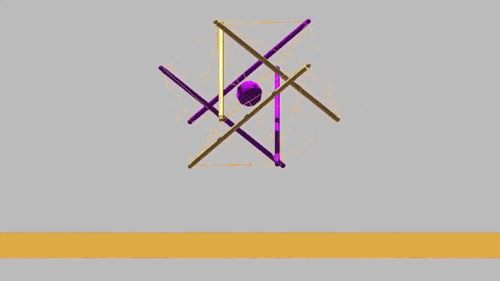What We Can Learn from a Dead Walking Cat with No Brain
It’s Halloween time, which is a big deal in my house. My wife loves to decorate heavily, and we all get into it as we live in a neighborhood that gets hundreds of kids an hour. At a recent conference, I saw this great video of an old dead-cat experiment, and I thought it was perfect as a lead-up to All Hallows’ Eve! In addition, this walking dead cat can teach you something about your amazing body and what may be wrong with it that causes pain.
The Walking Dead Cat
This is an old experiment, but one that still amazes me. Yes, this is an experiment that likely could never be done in 2017, but it looks like it’s from the ’20-’30s. Once you get beyond the “ick factor,” it will also amaze you. As an example, I showed it to my wife last night and her initial reaction was that this was awful. However, she came back an hour later, once she had thought about it, and was intrigued about how it all worked.
What’s amazing is that they removed most of the brain of this dead cat (they left the brain stem) and propped him up on a treadmill. Note that while he has no forebrain, he can still walk, trot, and run! Think about that for a second. All of the complex muscle coordination that would allow him to do this, is retained. This is a virtual perfect symphony of millisecond-precision firing of many muscles that still work when the cat is clinically deceased. Why?
Nerves move information relatively slowly compared to electrical systems, where electrons zip around at the speed of light. Hence, if the nerve impulses had to travel back and forth to the brain to allow us to walk, we could never coordinate all of the complex muscle firings quickly enough. Your body solves the issue by locating most of the complex neural circuitry that controls walking in the spinal cord, which shortens the distance that the nerve signals must travel. That can then be modified by more circuitry in the brain stem, which can then be further modified by your brain. In the case of a cat, this circuitry still works even if you remove the brain.
While this seems like distant and obtuse knowledge, it’s really not. In fact, it’s being used right now, in part, to help paralyzed people walk again with epidural stimulators. In fact, there was just a press release this morning on this new technology.
What Can We Learn from the Cat?
While there is neural circuitry that allows the cat to walk, another element that helps the cat is tensegrity. What’s that? Check out the tensegrity structure below as it hits the ground and bounces back to its normal shape:
A tensegrity structure is made up of stiff poles and cables that hold the shape through tension. In the cat (or your legs and spine), the bones are the poles and the tendons, ligaments, muscles, and fascia are the cables. It’s not hard to see that the structure above is storing energy as it hits the ground and rebounding off the floor as it returns that energy.
This video shows a tensegrity structure built to represent the leg:
What Happens in a Tensegrity Structure if You Mess with the Cables?
In a tensegrity structure, if you cut or damage one of the cables, the whole shape of the structure is impacted. Look at the tensegrity sculpture to the right. If you cut one of the taught cables at the bottom that are holding this together, it’s not hard to see how the whole structure will deform.
Now think about your body, which is one big tensegrity structure. In a similar way, if you stretch a ligament or tendon in your foot or knee, it’s not hard to see how it will impact the shape of your body in small ways. Hence, the lesson of the cat is not only that much of the neurology is automatic but also that the built-in tensegrity provides the key “spring” in the system.
Fixing Tensegrity
One of the areas where the precise imaging-guided injection of stem cells or PRP excels is tightening and healing stretched-out ligaments, tendons, and fascia. Hence, while identifying where to treat can be complex and takes a highly detailed exam, fixing it can be as simple as a precise placement of something that can heal the damage.
The upshot? We can all learn a lot from a spooky dead cat at Halloween! The big lesson for patients is that because your body is a tensegrity structure, what happens to ligaments or tendons in one area can impact other areas! In addition, regen med techniques can help solve these issues!
This lecture was inspired by Brad Fullerton‘s excellent work on tensegrity and fascia!

If you have questions or comments about this blog post, please email us at [email protected]
NOTE: This blog post provides general information to help the reader better understand regenerative medicine, musculoskeletal health, and related subjects. All content provided in this blog, website, or any linked materials, including text, graphics, images, patient profiles, outcomes, and information, are not intended and should not be considered or used as a substitute for medical advice, diagnosis, or treatment. Please always consult with a professional and certified healthcare provider to discuss if a treatment is right for you.

